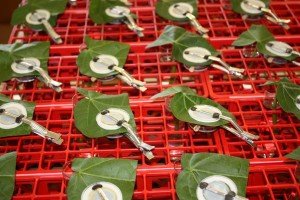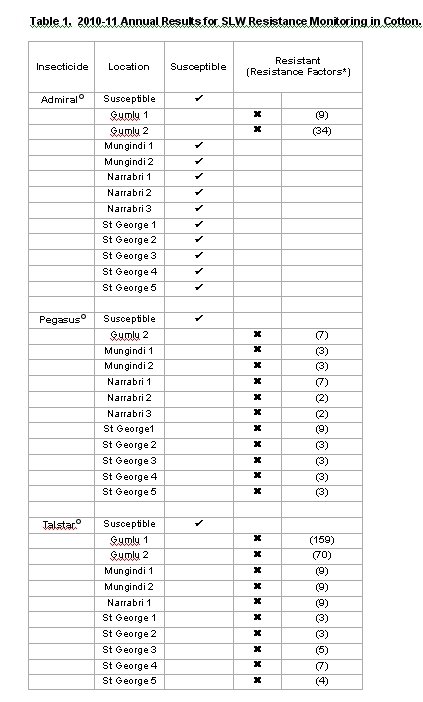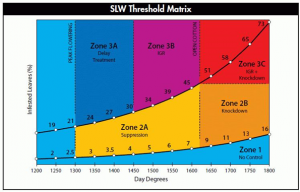Last season was a somewhat low pressure year for silverleaf whitefly (SLW) in all cotton districts. The low pressure may have been attributed in part to high rainfall especially through central Queensland which does not favour whitefly population build up. St George and Mungindi districts still reached densities that exceeded the recommended insecticide spray thresholds although they generally fitted into the ‘2A suppression’ zone of management as opposed to the potentially more damaging ‘3B insect growth regulator (IGR)’ zone.
The low SLW pressure observed last season challenged the resistance monitoring team to develop new collecting techniques as the current collection method of selecting leaves with red-eye nymphs is slow and laborious in a low pressure season. A new collection method was developed based on collection methods observed during the CRDC funded study tour to Arizona and California during 2010, which utilised a modified vacuum cleaner and this has been found to be highly effective this year. Thank you to Matthew Rogan and Chris Monsour who made collections during the season for the resistance monitoring program.
Collections were made from cotton growing districts in QLD and northern NSW; Emerald, Burdekin, St George, Mungindi and Narrabri. Due to very low whitefly populations, no whitefly were obtained from the Darling Downs. A total of 14 collections were made from the field and maintained in culture to be tested against all four registered SLW insecticides; Admiral®, Pegasus®, Talstar® and Movento®.
Resistance testing results indicate that SLW sampled from cotton growing regions remain largely susceptible to Admiral®. However elevated resistance frequencies have again been recorded from regions such as Bowen and the Burdekin which have intensive mixed cropping farming systems. These higher resistance factors are reflective of a more frequent usage pattern for Admiral® and demonstrate that problematic levels of resistance can develop to this product. This should remind growers and advisors of the importance of supporting the Insecticide Resistance Management Strategies (IRMS) in place within each region and ensure that only one application of each insecticide product is used per season to reduce selection pressure.
Testing for Pegasus® indicates resistant individuals are present in the population in all samples tested however resistance frequencies have not increased since last season and therefore no changes are required to the IRMS at this stage. Pegasus® is not registered in horticulture in Australia and is not used widely elsewhere in the world and there is limited information available on SLW’s propensity to develop resistance to this product. One of the few places where Pegasus has been used extensively is in Israel where this product has been used for 14 years in cotton without resistance developing.
Talstar® has elevated resistance factors in both cotton and horticultural production areas in all samples tested. Resistance factors for cotton have not changed from past seasons however the very high levels recorded in horticulture (where Talstar® is used more frequently) indicate SLW’s propensity to develop resistance to this insecticide. While Talstar® is registered for SLW in cotton, it is not recommended for use due to the disruption it causes to natural enemies and poor performance against SLW (Talstar is not translaminar and therefore has poor contact with whitefly which sit on the underside of leaves).

Movento®, the newest SLW insecticide option was also tested but as this is the first season that Movento has been registered for cotton no data is available from previous seasons to compare resistance factors. Initial data indicates that populations are highly susceptible (based on very steep slopes in full dose response assays) which is expected, given that this is a new product with a unique mode of action.
The 2010-11 annual resistance monitoring results for SLW were presented to the Transgenic and Insecticide Management Strategy (TIMS) technical panel for consideration in deciding the management strategy for the 2011-12 season. The outcome of this meeting is that no changes to management are required at this stage. Admiral®, Pegasus® and Talstar® all have resistant levels present in the population but remain unchanged from previous seasons. Higher resistance levels have been recorded for Admiral® and Talstar® in horticulture in the Burdekin. Using a maximum of one application of these products within a season in compliance with the current IRMS will conserve the efficacy of these products for future years.

Article by Zara Hall

